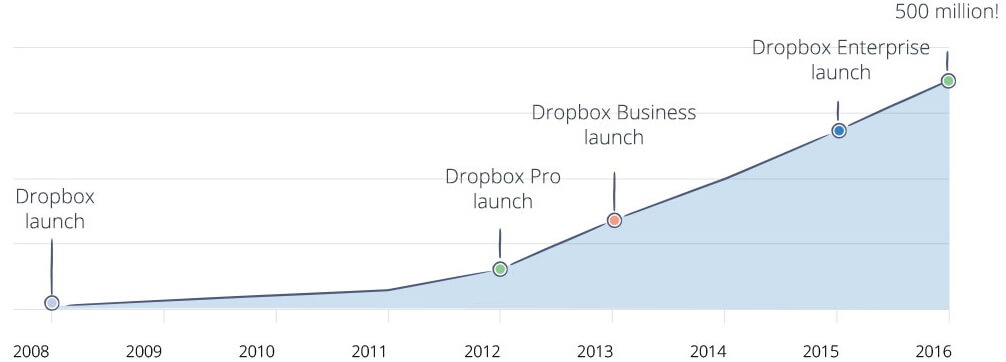How adopting a hybrid product development strategy supports growth

.png)

.png)
The default approach to product development is often top-down; new ideas and decisions are made at the top by product managers with little to no input from other product teams. Once the PM has established a product strategy, it filters down to other teams, like engineers, who act on these directions.
Bottom-up product development results when non-management teams are the ones making product decisions; these teams come up with ideas that upper management then organizes and follows through on.
A hybrid product development strategy does both; it encourages top-down and bottom-up ideas.
There's so much potential in approaching product development with a hybrid model, but in order to maximize this effort, enterprises have to adopt a culture that supports it. Here we take a closer look at exactly how to do this.
Integrate hybrid product development by adopting a “product-first” mentality across your organization. Allow all employees the opportunity to offer ideas that will benefit your product.
A product-first company puts emphasis on using innovation to enhance and grow their product. That innovation can come from anywhere because product managers no longer function as the sole source of new ideas. A culture focused on what's best for the product promotes cohesion and idea sharing. With everyone offering ideas to enhance the product, the possibilities of creating something groundbreaking are endless.

Of course, those ideas need to come from somewhere. If you want everyone in your team to put their best ideas forward, you need to give them the tools to do so. That means sharing all relevant information company-wide.
Facilitating idea generation and sharing often requires making small but impactful changes to your culture. Take Life360, for instance: They recognized that as they grew, their analytics system was starting to create barriers and inefficiency within their company. So they sought out a third-party solution with the goal of decentralizing access to data. They made access to data open to everyone in their team and allowed them to come up with their own solutions using customized dashboards.
Now, everyone within the organization can access shared data to dive deeper into product metrics and find and verify potential opportunities. Teams meet regularly to review their custom dashboards and make joint product decisions. The analytics team is available for added insights, but other teams are no longer solely dependent on them for knowledge.
Whether you're enhancing an existing product or adding a new one to your line, commitment to a hybrid development method will support your product as you scale. Encouraging insight from both the top and bottom widens your pool of expertise, and increases your chances of success in an ever more complicated product landscape.
When Dropbox decided to scale their business and develop Dropbox Business, they hired a product engineering lead to shepherd the new product's development. However, there was still top-down involvement, which created hybrid development. It was a huge project, but the hybrid development option meant they could “accomplish ambitious all-hands projects and continuously nurture new ideas from individuals.”
They allowed engineers to the product planning and receive input from everyone at the company (bottom-up), while managers owned the product roadmap (top-down). By splitting responsibilities, they were able to stay focused and keep the product on track.
They also used the following framework:

Dropbox has seen incredible growth since their Business launch as a result of their commitment to the hybrid approach; they're now racking up around $400 million in revenue based on over 500 million users. Not too shabby!
A top-down approach may be beneficial for keeping projects focused to avoid scope creep, but when you embark on new, uncharted territory, take advantage of hybrid development to allow the rest of your team to voice their opinions and contribute unique perspectives. As a whole, you'll be better able to spot opportunities and “keep an open environment for new ideas.”
Large enterprises are inclined to default to a top-down approach, but the hybrid method is nothing without bottom-up involvement. To break the top-down cycle, managers should share user feedback with engineers. This acts as an invitation for engineers to get involved and take their seat at the product strategy table.
For engineers, knowing that they're not just throwing code into a black hole and that it's actually impacting the way users interact and view the product is a powerful form of encouragement. They're able to see the results of their efforts and to understand that these efforts serve a purpose.
Inclusion empowers engineers to make actionable suggestions for back-end product development that will make the product better and help the company grow.

An added bonus to getting engineer buy-in? Quick bug fixes! When bugs crop up, engineers are quicker to fix them when know and care about how the product will be viewed by users. They begin to take ownership of the role they play in user experience and product growth.
Don't just blindly build or enhance products you think users will like. Share what users are saying with your engineers; they're in a unique position to either support your ideas or provide alternatives you didn't think of.
Hybrid product development works in your product's favor: A product has a better chance of sustained growth when teams with unique skillets put their heads together and are jointly committed to the same goals.
And a hybrid model is good for your people, too. When everyone is aware of the big picture and the part they play within it, they're more likely to care about company-wide successes and to feel motivated to make them happen more often.
Of course, it's still the product manager's job to act as the final gatekeeper for the product. But instead of guarding the gate, try opening it up to feedback and ideas from other teams and team members; you may be surprised by the opportunities and innovations that emerge.